Abstract
A respiratory survey was conducted in two British towns, one with a high mortality (Caerphilly) and one with a low mortality (Bath) from respiratory disease. A total of 513 men aged 65-74 years were seen. The Caerphilly men had poorer lung function than the Bath men; the overall difference in FEV1 and FVC for men aged 70 and 1.68m tall was 0.16 1 and 0.17 1 respectively. These differences appeared to be largely due to the greater tendency of the Caerphilly men to smoke and to an effect related to social class. Respiratory symptoms were also more common in Caerphilly, principally because of the effects of smoking and occupational group, although when these factors were allowed for there was still a significantly greater prevalence of breathless wheezing in Caerphilly.
Full text
PDF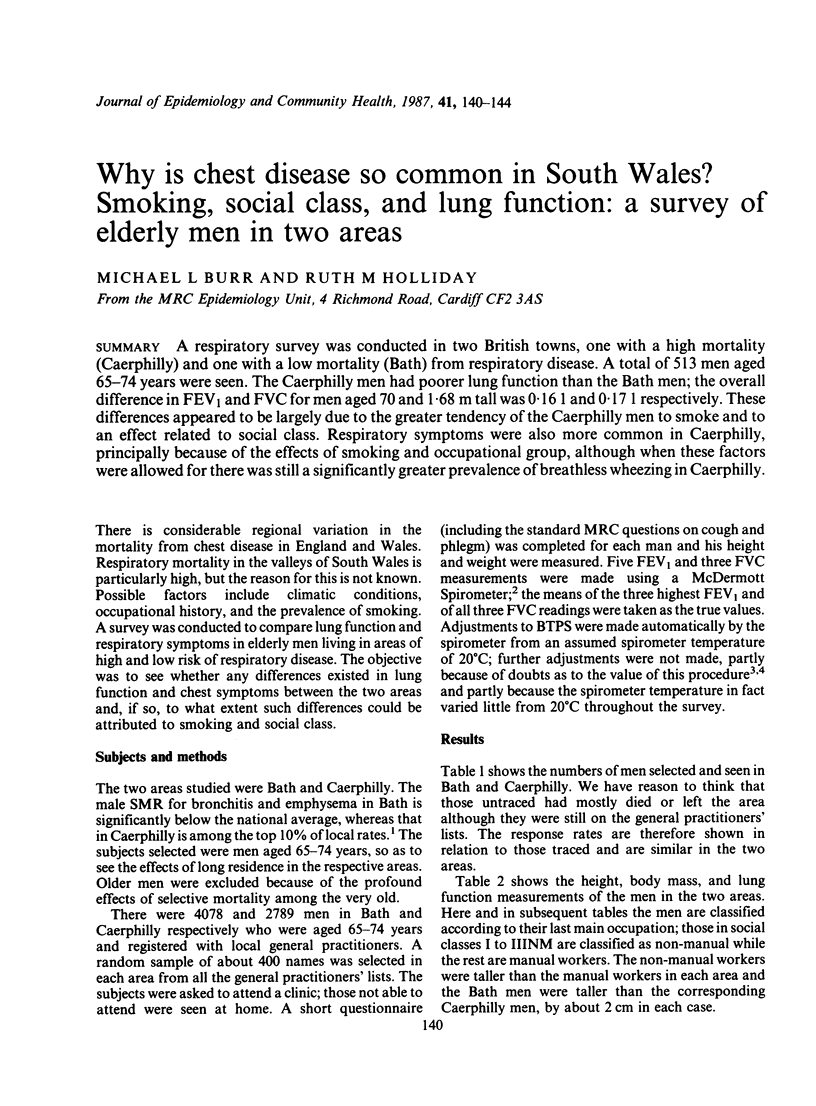
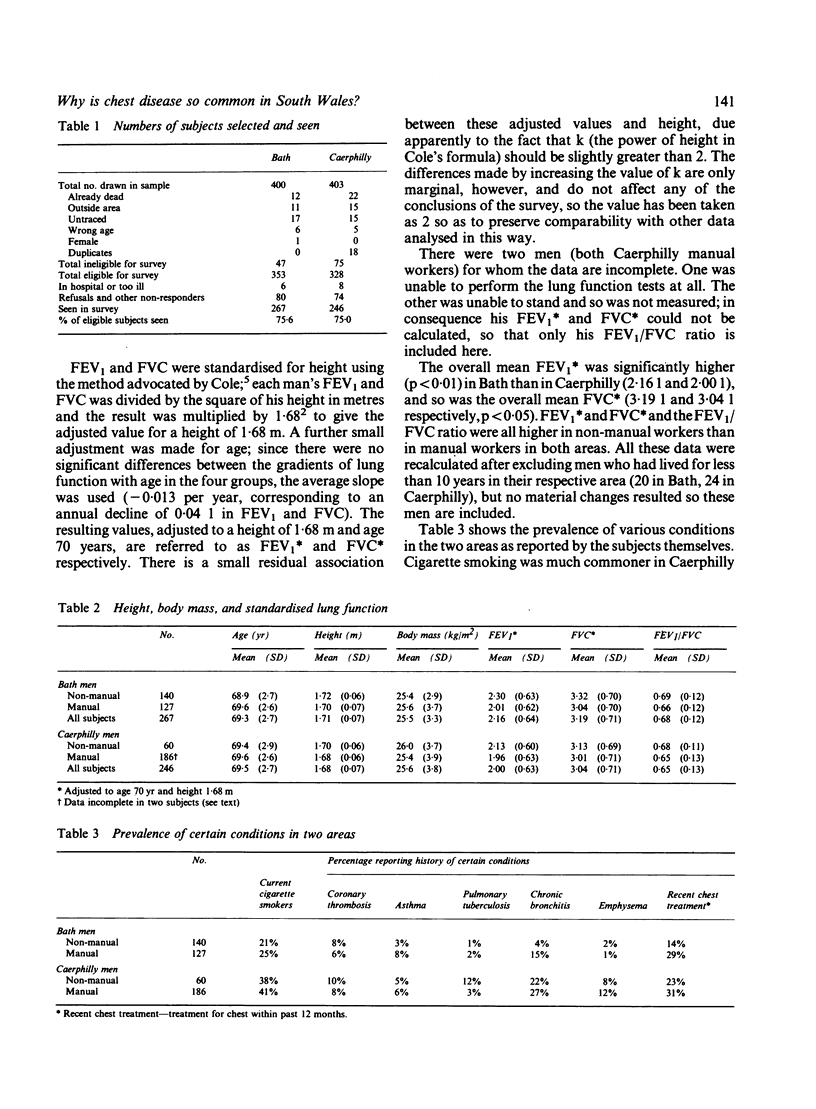
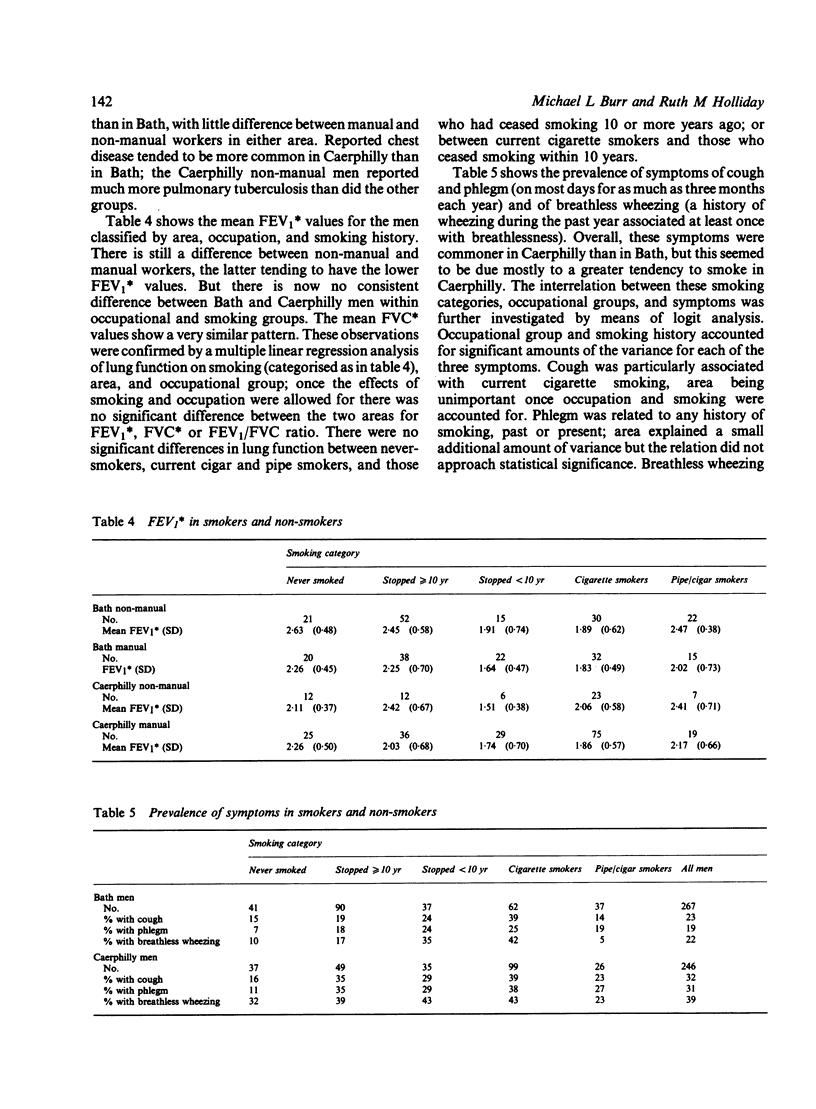
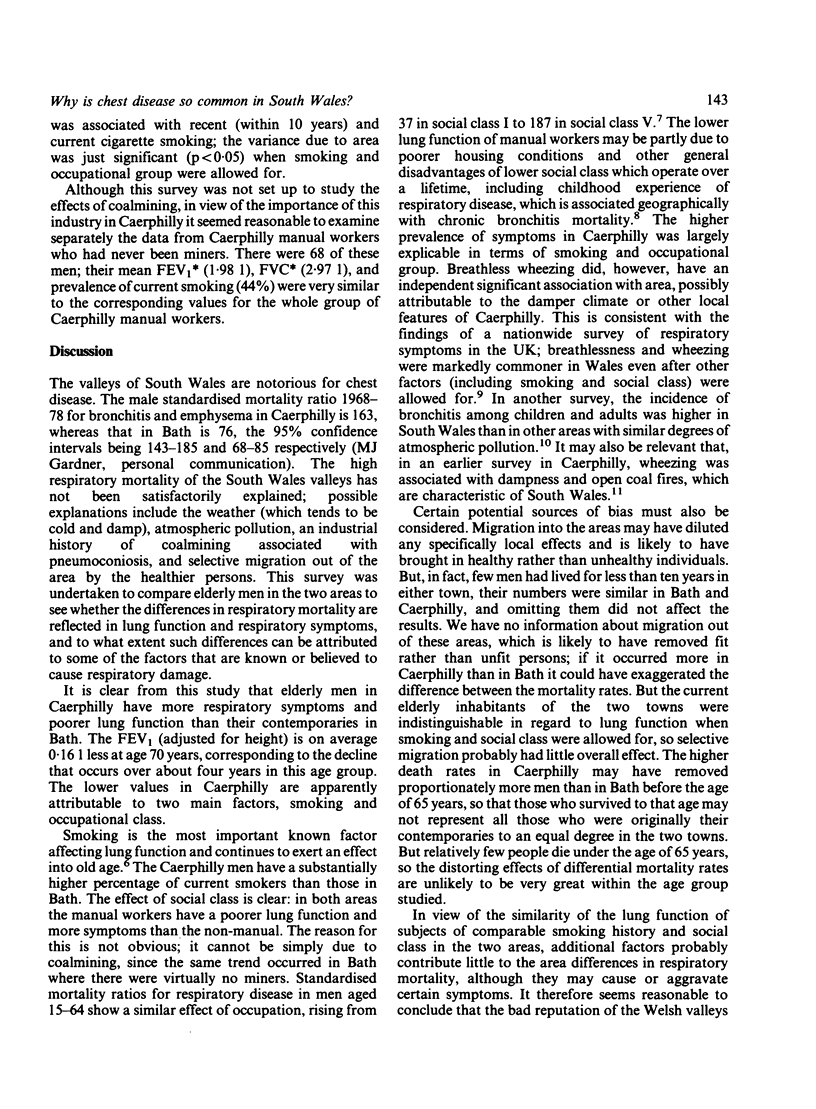
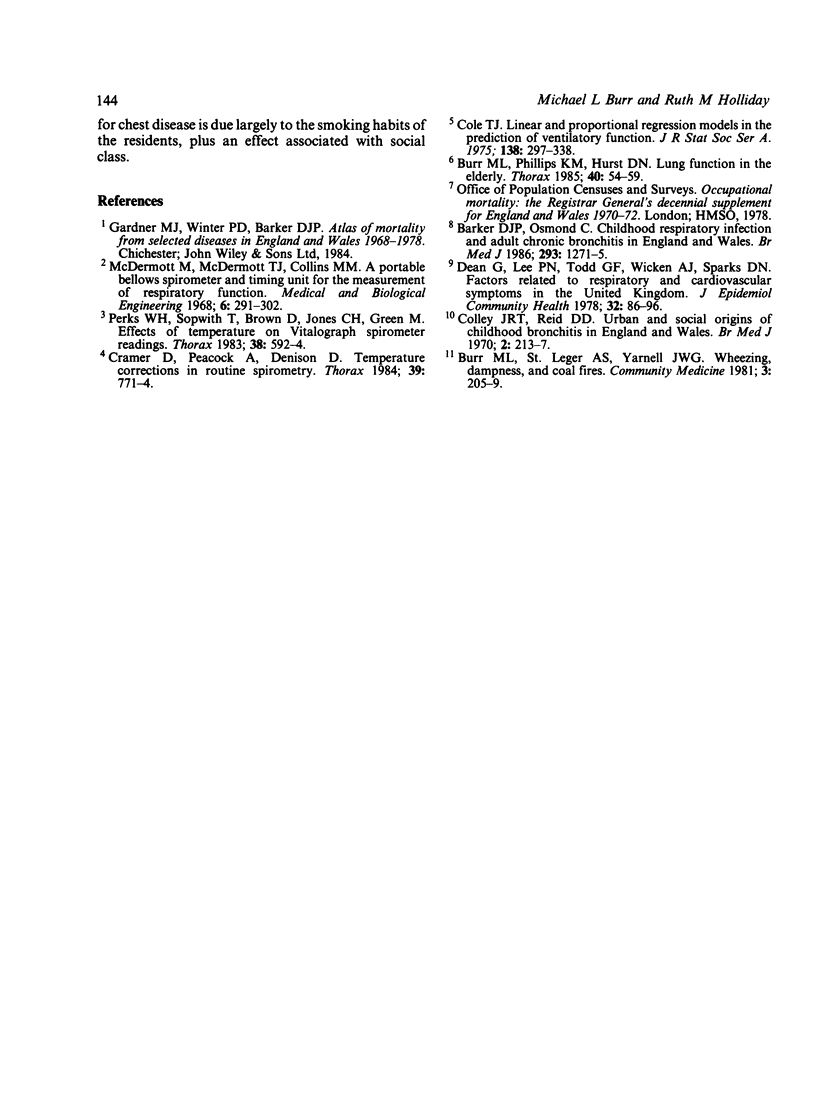
Selected References
These references are in PubMed. This may not be the complete list of references from this article.
- Barker D. J., Osmond C. Childhood respiratory infection and adult chronic bronchitis in England and Wales. Br Med J (Clin Res Ed) 1986 Nov 15;293(6557):1271–1275. doi: 10.1136/bmj.293.6557.1271. [DOI] [PMC free article] [PubMed] [Google Scholar]
- Burr M. L., Phillips K. M., Hurst D. N. Lung function in the elderly. Thorax. 1985 Jan;40(1):54–59. doi: 10.1136/thx.40.1.54. [DOI] [PMC free article] [PubMed] [Google Scholar]
- Burr M. L., St Leger A. S., Yarnell J. W. Wheezing, dampness, and coal fires. Community Med. 1981 Aug;3(3):205–209. doi: 10.1007/BF02549117. [DOI] [PubMed] [Google Scholar]
- Colley J. R., Reid D. D. Urban and social origins of childhood bronchitis in England and Wales. Br Med J. 1970 Apr 25;2(5703):213–217. doi: 10.1136/bmj.2.5703.213. [DOI] [PMC free article] [PubMed] [Google Scholar]
- Cramer D., Peacock A., Denison D. Temperature corrections in routine spirometry. Thorax. 1984 Oct;39(10):771–774. doi: 10.1136/thx.39.10.771. [DOI] [PMC free article] [PubMed] [Google Scholar]
- Dean G., Lee P. N., Todd G. F., Wicken A. J., Sparks D. N. Factors related to respiratory and cardiovascular symptoms in the United Kingdom. J Epidemiol Community Health. 1978 Jun;32(2):86–96. doi: 10.1136/jech.32.2.86. [DOI] [PMC free article] [PubMed] [Google Scholar]
- McDermott M., McDermott T. J., Collins M. M. A portable bellows spirometer and timing unit for the measurement of respiratory function. Med Biol Eng. 1968 Jun;6(3):291–302. doi: 10.1007/BF02478783. [DOI] [PubMed] [Google Scholar]
- Perks W. H., Sopwith T., Brown D., Jones C. H., Green M. Effects of temperature on Vitalograph spirometer readings. Thorax. 1983 Aug;38(8):592–594. doi: 10.1136/thx.38.8.592. [DOI] [PMC free article] [PubMed] [Google Scholar]


